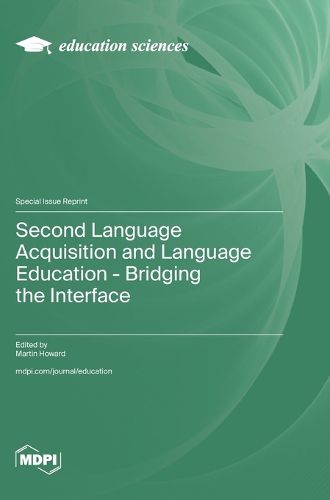Readings Newsletter
Become a Readings Member to make your shopping experience even easier.
Sign in or sign up for free!
You’re not far away from qualifying for FREE standard shipping within Australia
You’ve qualified for FREE standard shipping within Australia
The cart is loading…






This title is printed to order. This book may have been self-published. If so, we cannot guarantee the quality of the content. In the main most books will have gone through the editing process however some may not. We therefore suggest that you be aware of this before ordering this book. If in doubt check either the author or publisher’s details as we are unable to accept any returns unless they are faulty. Please contact us if you have any questions.
Emerging in the 1970s, second language acquisition (SLA) is now a long-established field, illuminating the complexity of language learning among learners in different learning contexts, ages, and developmental stages from diverse perspectives. As an independent field within Applied Linguistics, drawing on a range of cognate fields reflecting its interdisciplinary underpinnings, the field offers a diverse range of potential insights for language practitioners. The latter include language instructors but also language education policy makers, those involved in language testing, and learners themselves. While language acquisition and language education are often confounded, the specificity of their focus is different. Notwithstanding, there is a natural interface between an acquisitional approach and an educational focus to learning a second language. That interface extends beyond instructed second language acquisition (ISLA) as a sub-field of SLA, where there is a strong focus on classroom input exposure conditions. This volume includes, but also goes beyond, ISLA to consider the interface between SLA and language education as a means of exploring a non-exhaustive range of insights that SLA can provide on the learning process of relevance to language practitioners and other stakeholders. The presentation showcases the scope for SLA and language education practitioners and stakeholders to engage in mutually beneficial dialogue.
$9.00 standard shipping within Australia
FREE standard shipping within Australia for orders over $100.00
Express & International shipping calculated at checkout
This title is printed to order. This book may have been self-published. If so, we cannot guarantee the quality of the content. In the main most books will have gone through the editing process however some may not. We therefore suggest that you be aware of this before ordering this book. If in doubt check either the author or publisher’s details as we are unable to accept any returns unless they are faulty. Please contact us if you have any questions.
Emerging in the 1970s, second language acquisition (SLA) is now a long-established field, illuminating the complexity of language learning among learners in different learning contexts, ages, and developmental stages from diverse perspectives. As an independent field within Applied Linguistics, drawing on a range of cognate fields reflecting its interdisciplinary underpinnings, the field offers a diverse range of potential insights for language practitioners. The latter include language instructors but also language education policy makers, those involved in language testing, and learners themselves. While language acquisition and language education are often confounded, the specificity of their focus is different. Notwithstanding, there is a natural interface between an acquisitional approach and an educational focus to learning a second language. That interface extends beyond instructed second language acquisition (ISLA) as a sub-field of SLA, where there is a strong focus on classroom input exposure conditions. This volume includes, but also goes beyond, ISLA to consider the interface between SLA and language education as a means of exploring a non-exhaustive range of insights that SLA can provide on the learning process of relevance to language practitioners and other stakeholders. The presentation showcases the scope for SLA and language education practitioners and stakeholders to engage in mutually beneficial dialogue.